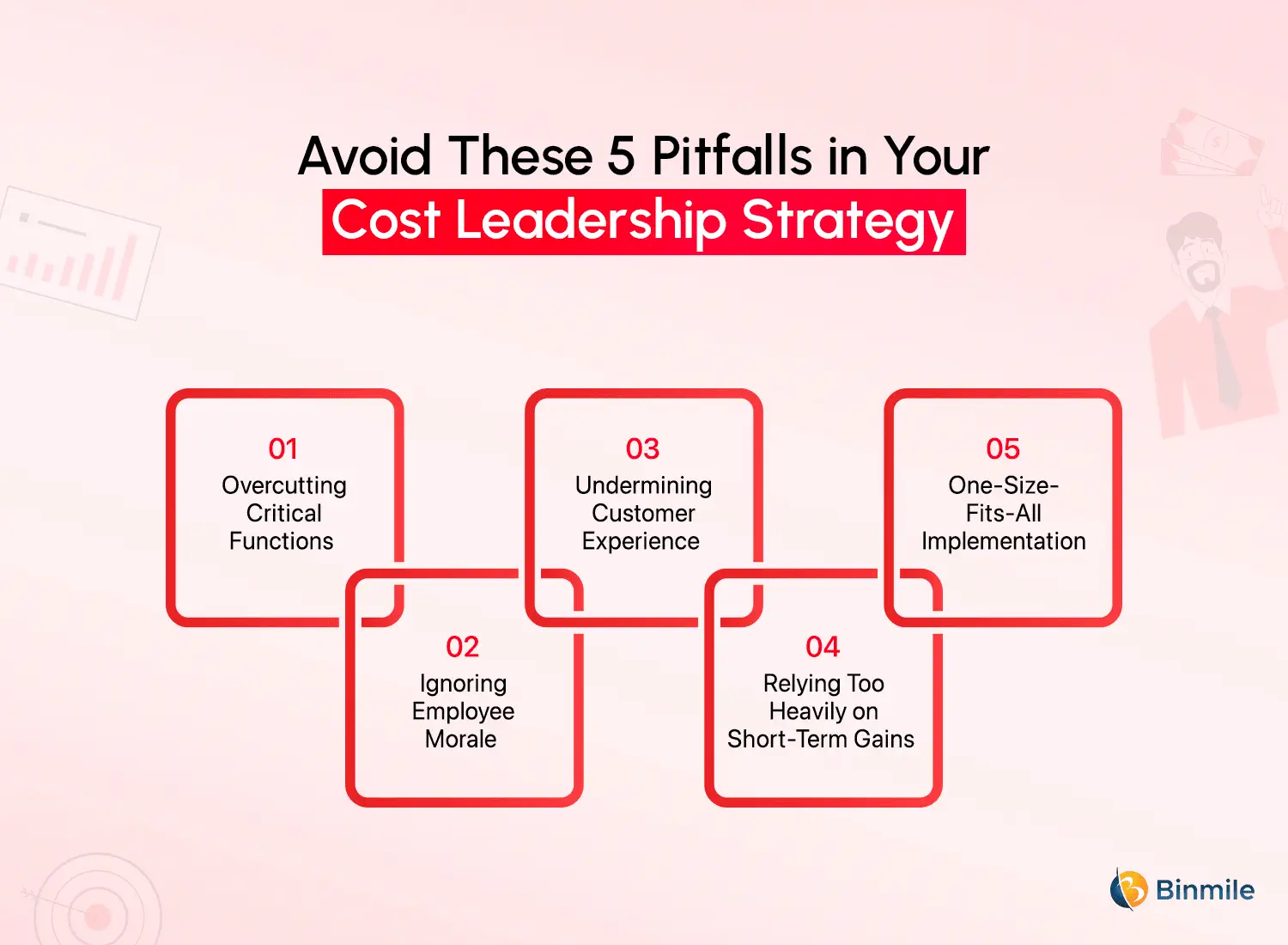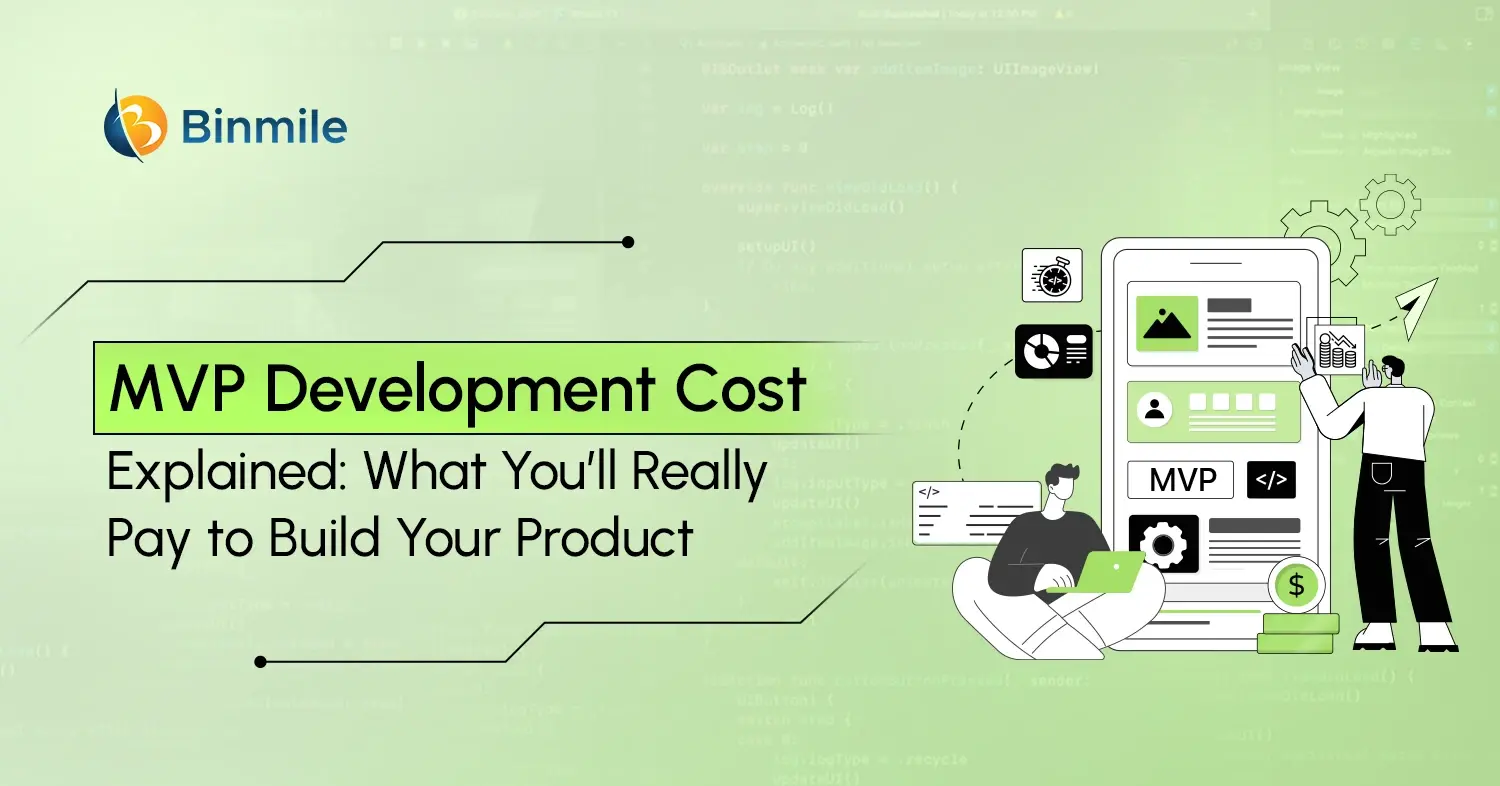Businesses struggle a lot to stay afloat with so many companies competing for consumers’ attention, especially in a rapidly evolving mobile-driven market. Companies are constantly seeking strategies to outperform their competitors, drive sustainable growth, and reduce costs at every level without compromising quality. One of the most impactful strategies is the cost leadership strategy. This strategy enables businesses to incur the lowest production and other operating expenses while offering the most competitive prices and maintaining healthy profit margins.
So, if you also want to leverage the strategy, ensure the lowest prices, and earn a profit, this blog is for you. In this blog, what is a Cost focus strategy, how it works, its advantages, and risks. Additionally, we will share seven practical steps to implement a cost leadership strategy, enhancing your business success, customer experience, and driving sustainable growth.
What is a Cost Leadership Strategy?
Cost leadership is a business-level strategy that intends to help companies gain a competitive advantage by being the lowest-cost producer of a service, production process, or digital product. To successfully achieve this without drastically cutting revenue or compromising product quality, businesses attempt to reduce costs in all other areas of the company that don’t have a direct impact, such as marketing, distribution, and packaging.
Cost Leadership vs. Price Leadership: What’s the Difference?
Both are often used interchangeably, but are different. Price leadership prioritizes having the lowest prices in an industry, whereas cost leadership focuses more on having the lowest operating costs. In some cases, a company that has become a cost leader is also the price leader in its market; however, this is not always the case. For instance, Amazon initially operated at a loss for many years as it expanded its market share, and eventually, it was able to create a broad base of loyal customers. Therefore, price leadership isn’t based on cost leadership.
Cost Leadership Strategy: Real World Scenario


The Advantages of Cost Leadership Strategy are as follows:
- Higher Profit Margins: When production costs are reduced by making goods at a low price, more money is left for profit.
- Competitive Pricing: High competition in pricing forces competitors to lower their production costs. Thus, it is advantageous for consumers to get products at lower prices.
- Market Share Growth: As more people look for less costly but still good items, companies that offer these gain a bigger share of the market over their competition.
- Streamlined Operations: By optimizing production processes, supply chain management, and leveraging economies of scale, companies not only cut costs but also allow businesses to sustain their competitive advantage in the long run.
The Disadvantages of Cost leadership Strategy are as follows:
- Reduced Competition: By existing in the market, cost leaders discourage other companies from joining, and so competition is reduced.
- Quality Trade-offs: Businesses must balance low costs with maintaining overall quality, which can be a challenging task at times.
- Adaptation Challenges: Efficiently continuing large operations and saving costs is difficult, as there is a constant shift in trends and innovations.
Also Read: Cost Leadership vs Differentiation Strategy
How to Implement a Successful Cost Leadership Strategy in Your Organization: 7 Tips to Know
Cost leadership strategy doesn’t mean slashing budgets or squeezing every supplier dry. True cost leadership is a strategic approach that focuses on creating operational efficiency through digital transformation while preserving value for both customers and employees. Here’s how innovative businesses get it right.

1. Consistency First, Then Flow
When your products, services, and internal operations follow uniform processes, the overall structure becomes easier to manage and maintain. Reducing variations lays the groundwork for better planning, smoother handovers, and fewer unexpected errors. Once consistency is established, simplify workflows by removing low-value steps, applying tools that reduce manual work, and fine-tuning tasks to eliminate friction. These changes help shift operations from a reactive to a proactive approach. Over time, consistency paired with continuous refinement becomes a core strength that supports both scale and agility.
2. Choose the Right Tools
Cost control isn’t about avoiding investment; it’s about making informed decisions. It’s about choosing the right one, such as workflow automation tools, cloud platforms, and data systems, which improve reliability, speed, and operational accuracy. While there may be initial costs, these tools help reduce errors, cut downtime, and make work more repeatable and transparent. More importantly, technology frees up internal capacity for work that actually moves the business forward. When tools are chosen with long-term efficiency in mind, they quickly move from being cost centers to performance enablers.
3. Build Strong Supplier Partnerships
What you pay for goods and services directly affects your ability to remain competitive. But negotiating better terms while forming reliable, aligned partnerships. Suppliers who understand your business goals are more likely to offer flexibility, volume pricing, and shared improvements that benefit both sides.
Sustainable supplier relationships are built on trust and transparency, and as you foster that kind of engagement, they become more responsive to evolving needs. Naturally, this approach not only controls cost but also strengthens supply chain resilience, an increasingly vital factor in today’s volatile market.
4. Target the Real Cost Contributors
A blanket approach to cutting expenses often leads to inefficiencies elsewhere, slowing progress or harming areas that deliver value. Therefore, develop a more effective method to analyze your total cost of ownership, identify cost drivers, and pinpoint the top areas where adjustments will lead to a measurable impact.
Whether it’s inventory turnover, energy usage, or transportation costs, focusing on high-impact areas delivers results without disrupting overall performance. Doing so will encourage teams to think critically about what drives cost in their departments and how they can take ownership of improvements.
5. Insights Drive Decisions
Operational choices shouldn’t rely on instinct alone. Real-time insights from supplier performance to customer preferences help leaders stay ahead of problems and identify opportunities for improvement. These insights allow quicker course corrections and more confident decision-making at every level, so focus on embedding data into daily operations shifts the culture.
Your workforce will eventually begin using evidence, rather than assumptions, to guide their decisions. The result is better coordination, faster feedback loops, and a more vigorous habit of continuous improvement, essential for staying lean without losing effectiveness.
6. Maximize Team Potential
Rather than defaulting to labor cuts, organizations should focus on using talent more effectively. Cross-training, clear roles, and performance-based incentives foster flexibility and enhance productivity without necessitating payroll expansion. Just as vital is communication; when employees understand their role in broader goals, they take initiative and create efficiencies. Investing in employee development not only enhances productivity but also fosters a culture of innovation and continuous improvement. After all, a well-supported team becomes a force multiplier: motivated, adaptable, and aligned with the organization’s vision.
7. Maintain Customer Trust
While it’s tempting to scale back touchpoints or downgrade quality, doing so risks damaging the brand’s long-term credibility. Instead, savings should come from areas invisible to the end user, such as internal logistics, back-office functions, or procurement optimization.
When done right, customers notice improved consistency, not compromise. They feel they’re receiving better value even as internal costs are being reduced. The strongest businesses are those that can tighten budgets without their customers ever noticing or impacting their customer expereince.
Transform market uncertainties into opportunities with tailored product roadmaps that drive lasting customer loyalty and competitive edge.

5 Cost Leadership Mistakes That Can Hurt Your Business

1: Excessive Cuts
Cutting too much money can harm valuable areas of the business, and protect high-impact areas, such as customer service, SDLC processes, R&D, or core operations. Cost leadership isn’t about trimming everything; it’s about deciding which expenses to control and which to keep, in order to achieve performance without eroding capabilities.
2: Employee Neglect
Trying to be overly efficient without checking how your team feels can be a big mistake. If team members feel overburdened or neglected, their involvement decreases, which can lead to poor productivity or subpar customer service. A cost-conscious culture must still prioritize people and strike a balance between lean operations and workforce well-being to maintain high performance over the long term.
3: Weak Engagement
Cutting noticeable areas of quality, such as support, packaging, and simplicity, can lower short-term costs, but will likely result in lost customer loyalty over time. People observe when the products become less valuable. Make changes to reduce costs that don’t affect users and keep their experience the same while your systems become better.
4: Short-Term Focus
A sustainable strategy does not sacrifice the present for future problems. Quick wins may look impressive on paper, but overlooking more fundamental problems often creates more issues over time. Skipping any necessary steps, such as planning, training, technology due diligence, or investing in structure, might reduce initial spending, but it can lead to problems later on.
5: Standardized Tactics
Define your cost leadership strategy based on your specific inefficiencies and opportunities for growth. What works for one business may not work for another. If you simply apply standard cost-cutting ideas without considering your company’s organization, culture, or sector, it can lead to unintended challenges instead of sustainable savings.
Slash costs, scale fast, and stay ahead—effortlessly. Managed IT Services streamline operations while maintaining quality and market dominance.

Closing Remarks on Cost Leadership Strategy
To build a scalable and profitable business that stays ahead of market competition, adopting a cost leadership strategy is crucial. However, doing so requires more than just slashing prices. It requires a clear understanding of your cost structure and a strategic mindset focused on long-term sustainability. When executed correctly, the overall cost leadership strategy enables you to deliver value at lower costs and optimize resources without losing the competitive edge.
Hopefully, this blog has helped you understand how cost leadership works and how you can apply the strategy to your unique business context. Additionally, we recommend working with an IT consulting services company, which can be of great help! The company’s expertise and assistance can make the implementation smoother, smarter, and faster.
Ready to optimize your operations and unlock long-term cost advantages? Contact us for a free strategy consultation, and let’s tailor a cost leadership approach that fits your business goals.









